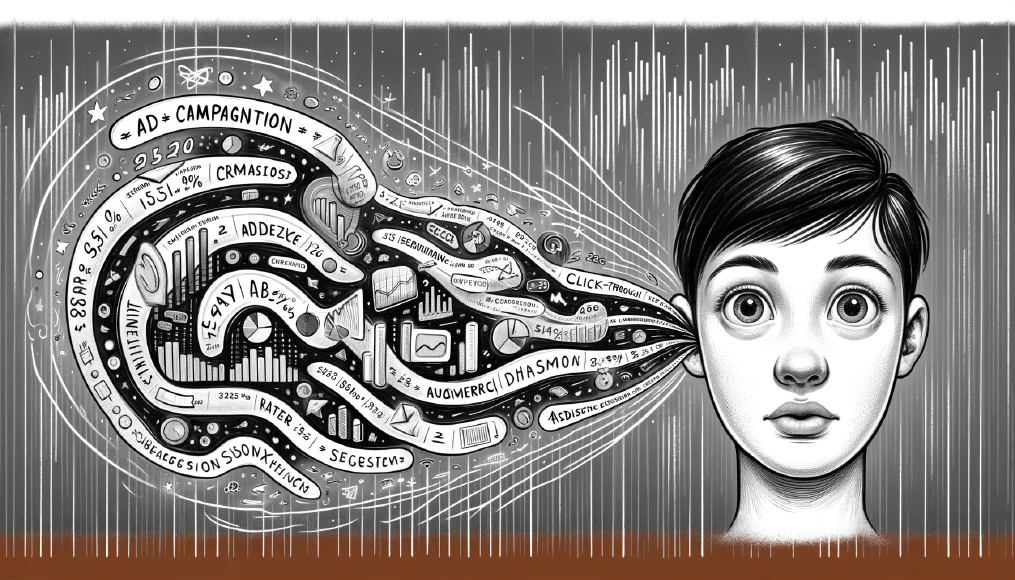In the ever-evolving realm of digital marketing, success often hinges on the ability to adapt and innovate. The cornerstone of this adaptability is a data-driven approach to advertising. Gone are the days of guesswork and intuition; today’s marketing landscape demands a strategy that is informed, precise, and agile. Let’s embark on a journey to understand the benefits of embracing data in your advertising efforts, exploring the key areas where data can be collected, the critical data points to monitor, and the overarching importance of this approach.
The Perks of Using Data in Your Ad Game
Before diving into the specifics, it’s important to understand why data is such a game-changer in advertising. Data-driven marketing isn’t just a buzzword; it’s a paradigm shift that changes how we view customer interactions and campaign effectiveness. Here, we’ll explore the tangible benefits this approach brings to your advertising strategy.
- Boosted Efficiency and ROI: Harnessing data for your ad strategy means you’re not just throwing darts in the dark. You’re targeting your audience with sniper precision, leading to higher engagement and a nifty return on your investment.
- Deeper Customer Insights: Data is like a window into your customers’ souls. It tells you what they like, what they do, and what makes them tick, helping you to tailor your messages and offers just for them.
- Quick on Your Feet: With real-time data, you can tweak your campaigns on the fly, keeping them fresh and relevant.
- Looking into the Crystal Ball: Data isn’t just about the now; it also predicts what’s next. Stay ahead of trends and be ready to pivot your strategies when needed.
- Smart Money Moves: Knowing which channels and campaigns hit the mark means you can put your money where it counts.
Now that we’ve established the importance of data, the next question is: where does one gather this valuable information? Data collection is a critical step in the process, and it’s essential to know the right places to look. This section will guide you through various sources of data that can enrich your advertising strategies.
- Website Analytics: Tools like Google Analytics are a goldmine for understanding how visitors interact with your site.
- Social Media Insights: These platforms are brimming with data on who’s engaging with your content and how.
- Customer Feedback: Don’t underestimate the power of a good old-fashioned survey.
- Sales Figures: Connect the dots between your ads and the till ringing.
With data sources identified, the focus shifts to what specific data should be monitored. This is crucial because not all data is created equal; some metrics are more insightful and relevant to your goals than others. Here, we’ll delve into the key data points that can make a real difference in your campaign’s success.
- Engagement Stats: Clicks, likes, comments, shares – the whole social shebang.
- Conversion Rates: It’s all about turning browsers into buyers.
- Who’s Watching?: Keep tabs on the age, location, and interests of your audience.
- Shopping Habits: What they’re buying, what they’re browsing – it’s all gold.
- Costs and Returns: Keep an eye on what you’re spending and what you’re earning back.
Understanding the ‘why’ behind data monitoring is as important as the ‘how’. This section will articulate the significance of each data point and how it contributes to a refined, targeted, and successful advertising strategy.
To Wrap It Up
In this comprehensive guide, we’ve explored the transformative impact of adopting a data-driven approach in today’s marketing landscape, highlighting the shift from relying on intuition to making strategic, informed decisions. We delved into the significant advantages of leveraging data, such as increased efficiency, deeper insights into customer behavior, and the agility to adapt strategies in real-time to align with emerging trends and consumer preferences. Identifying key sources of valuable data—from website analytics to social media engagement—and pinpointing critical metrics to monitor, this post equips businesses with the insights needed to tailor their advertising efforts for maximum engagement and ROI. Understanding the significance of each data point enables businesses to develop targeted, effective marketing strategies, leading to sustained growth and a competitive edge.
Follow-up Questions & Answers
Q1: How can a small business with limited resources effectively implement a data-driven approach in their advertising?
- For small businesses on a tight budget, start with the basics like Google Analytics and social media insights. Focus on the most relevant metrics and scale up as you grow.
Q2: What are some common pitfalls to avoid when interpreting data from ad campaigns?
- When it comes to data, context is king. Avoid pitfalls like ignoring the bigger picture or being swayed by confirmation bias. Always look for the full story.
Q3: How has the role of AI and machine learning influenced data-driven advertising in recent years?
- AI and machine learning have been game-changers, offering precise predictions, automating optimizations, and quickly slicing through big data sets. They’ve made top-tier data analysis accessible for everyone.


